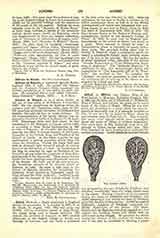

Alford, MICHAEL, a Jesuit missionary in England during the persecution, b. in London in 1587; d. at St. Omers, August 11, 1652. His real name was Griffith, and he sometimes passed as John Flood, the aliases being used to escape detection. He entered the novitiate at Louvain, in 1607, studied philosophy in the English College at Seville and theology at Louvain, and was made a professed of the four vows (see Jesuits) in 1619. After his ordination, he was sent to Naples to minister to his fellow countrymen there, as well as to the British merchantmen and sailors who frequented that port. From thence he was sent to Rome, where he filled the office of Penitentiary from 1615 to 1620. He then became Socius to the Master of Novices, and, subsequently, Rector of the Society‘s College at Ghent. In 1628, he went over to England and, immediately on his arrival at Dover, was seized as a priest. When restored to liberty he went to Leicestershire, where he labored for nearly thirty-three years. His principal hiding place was at Combe, in Hereford, where a subsequent search revealed a considerable library, most probably made use of by him in his writings. He was the author of many important works, especially of the famous “Annales Ecclesiastici et Civiles Britannorum, Saxonum, et Anglorum.” The “Britannia Illustrata” is attributed to him, but Sommervogel denies the authenticity of “The Admirable Life of St. Winefride”, also ascribed to him. To complete his “Annales” he received permission to pass over to the continent, but on arriving at St. Omers he was attacked by a fever and died.
T. J. CAMPBELL

